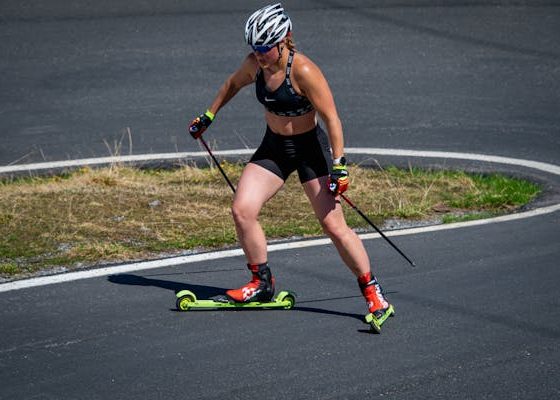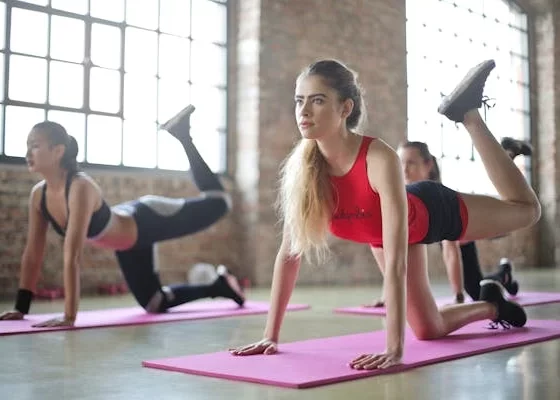Before you tackle the upper slopes of the mountain, it’s important to learn the basics of snowboarding. There are a few basic snowboarding skills to master from standing on the board to getting off the lift that will help you go down the mountain with ease.
Establishing Your Snowboarding Stance
Stance establishment is one of the most important snowboarding basics. Your snowboard stance indicates which will be your forward foot. Choosing the stance that feels most natural is the only way to obtain the balance required for snowboarding skills.
Putting Your Best Foot Forward
Snowboarding has two stances: natural and goofy. The natural stance places the left foot in the front, and the goofy stance places the right foot forward. You can determine your snowboard stance by sliding across a newly-waxed kitchen floor in your socks. Whichever foot slides forward first is an indication of your appropriate snowboard stance.
Determining Snowboard Stance Width
The snowboard stance width is measured as the distance between the middle of your left and right foot. In most cases, this will be a little bit wider than the width of your shoulders. An overly-wide stance will require you to “muscle” your turns, instead of using dynamic balance to control the turn shape. This type of stance often leads to early fatigue. In contrast, a stance that is too narrow will limit your range of motion.
The Stance Angle
The term “stance angle” refers to the angle in which your bindings are placed on your snowboard. In most cases, beginners will use a 21 degree angle for the front foot and a 9 degree angle for the rear foot. The stance angle can be fine-tuned as you gain proficiency.
Basics of Snowboarding
Snowboarding is a fun sport that can be enjoyed by a wide variety of people. Snowboarding isn’t as easy as it looks though. There are several basics to keep in mind before heading out on the mountain.
Putting on Your Board
Unlike ski bindings, snowboard bindings will not release in the event of a crash. The board bindings are much easier to get into compared to ski bindings. To get into the bindings:
- Begin by placing your board so that it is across, or perpendicular to the hill. Do not point it downhill.
- Clear the snow from your boot, and step into your front binding.
- Put the safety leash over the front boot to prevent the board from slipping away from you.
- Beginners should usually sit down when attaching their rear boot, but make sure that the snowboard is still perpendicular to the hill before you stand up.
Standing Up On Your Snowboard
Standing up on your board is another one of the essential snowboarding basics. The push-up, pull-up and the roll-over are the three primary ways to do this.
- For the push-up: Begin with your knees bent and your feet close to your butt. Place your hands behind you. Lean back slightly, and then thrust your weight forward so that your hips are over your heels.
- For the pull-up: Shift your weight to the toe edge of your snowboard and use your hands to help you get into an upright position.
- For the roll-over: Roll on to your knees, pushing your weight backward over your feet and extending your legs to an upright position. After you stand up, get accustomed to the balance by shifting your weight from your toes to your heels.
Carrying Your Snowboard
The snowboard can be carried under one arm, as if you are holding a large book. Some riders prefer to hold the board behind their backs with both hands. This is less tiring because it uses the strength of both arms, but it is not an efficient method to use if you are carrying your snowboard up the hill. Placing so much weight behind your body will make you feel out of balance. You can also attach the leash to your board, hold the leash and drag it through the snow.
Mastering the Rope Tow and Lift
In order to get the most out of the mountain terrain, you will need to learn how to get on and off the chair lift or use a rope tow. To do this, you must have an understanding of how to balance yourself on the board and change directions when needed while on your board. You can practice these skills before attempting a lift. You can also begin by using a rope tow which you hold on to in order to be transported up the mountain. To use the rope tow:
- Quickly push off with your back foot to gain speed in the direction of the pull.
- Place your back foot onto the board’s stomp pad and grab the rope gently and securely with both of your hands.
- Increase the firmness of your grip once you reach the ribber area of the rope.
- Remain in an upright stance while on the rope tow.
- Once you reach the top, simply let go of the rope and glide away.
Using the Chair Lift
The chair lift is a bit more challenging to use as a snowboarder. To use a chair lift, follow these steps:
- Glide toward the loading spot of the chair lift and wait for it to approach. As it approaches from behind, reach out with one hand to grab the chair and ease yourself onto the seat.
- Be sure to keep the tip of your snowboard pointed up and to pull the chair lift bar down into the safety position.
- You can use your free foot to support the weight of your board if you begin to tire.
- Before you reach the unloading station, pull up the safety bar.
- Point your snowboard straight ahead and place your back foot on the stomp while you are still seated.
- To unload, stand up and allow the chair to push you until you can glide away from the lift.
Heading Down the Mountain
To get the most out of snowboarding, many people benefit by taking lessons to get started. Once you have mastered the basics and are at the top of the mountain, always sit down and make sure that your binding is secure to your boot. You are ready to begin your adventure:
- Stand up and apply pressure to the front foot.
- Bend your knees and keep your back straight to maintain your balance. Try not to lean forward.
- To slow down, change your toe or heel edge.
- To change direction, rotate your torso to face the direction you want to go. You can also put more pressure on your back leg or front leg. You will need to experiment with this technique until you feel comfortable.
- To stop, lean back on your board. The more you lean back, the quicker you will stop. Be careful not lean back too much or you will fall.
Fun In the Snow
Snowboarding is an adventurous sport that requires basic knowledge and skills. One of the most important things to keep in mind is to use the techniques that are easiest for you to make the most out of your time in the snow. Once you get used to riding your board, you will develop your own personal style and be able to master downhill rides as well as some tricks.




